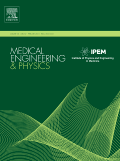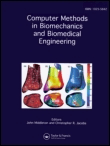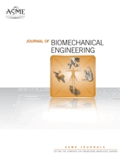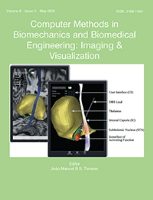
Advanced Biomedical Engineering
Scope & Guideline
Unleashing potential through open access research.
Introduction
Aims and Scopes
- Biomedical Signal Processing:
Research in this area encompasses the analysis and interpretation of biological signals, such as ECG, EEG, and EMG, utilizing advanced algorithms and machine learning techniques to enhance diagnosis and monitoring. - Medical Device Development:
This includes studies focused on the design, testing, and implementation of novel medical devices and systems, such as wearable sensors, imaging technologies, and surgical instruments, aimed at improving patient care. - Biomechanics and Rehabilitation Engineering:
Papers often explore the mechanical aspects of biological systems, including gait analysis, joint mechanics, and rehabilitation technologies, contributing to better understanding and treatment of musculoskeletal disorders. - Computational Modeling and Simulation:
Research that employs computational techniques to simulate biological processes and systems, aiding in predictive modeling for various medical conditions and treatment outcomes. - Telemedicine and Remote Monitoring:
The journal highlights advancements in telehealth technologies, focusing on systems that enable remote patient monitoring and care, particularly relevant in enhancing access to healthcare. - Materials Science in Medicine:
Explorations of biomaterials and their interactions with biological tissues, including studies on drug delivery systems, tissue engineering, and the development of biocompatible materials.
Trending and Emerging
- Artificial Intelligence and Machine Learning:
There is a marked increase in research utilizing AI and machine learning techniques for diagnostics, predictive modeling, and personalized medicine, reflecting the growing importance of data-driven approaches in healthcare. - Wearable and Remote Health Monitoring Devices:
The rise of wearable technologies for continuous health monitoring has gained traction, with studies focusing on the development and application of devices that track vital signs and other health metrics in real-time. - Regenerative Medicine and Tissue Engineering:
An increasing number of publications are dedicated to the development of bioengineered tissues and regenerative therapies, highlighting innovations in material science and cellular technologies. - Telehealth Innovations:
Research on telehealth services, including remote consultations and digital health platforms, is on the rise, driven by the need for accessible healthcare solutions in the wake of global health challenges. - Neuroengineering and Brain-Computer Interfaces:
Emerging research in neuroengineering, particularly focused on brain-computer interfaces and neuroprosthetics, is gaining momentum, reflecting advancements in understanding and interfacing with the nervous system.
Declining or Waning
- Traditional Imaging Techniques:
There has been a noticeable decrease in papers focused solely on conventional imaging modalities such as X-rays and CT scans, as the field shifts towards more advanced imaging techniques and integration with AI. - Basic Physiological Studies:
Research that primarily describes physiological phenomena without a strong engineering or technological application has become less frequent, as the journal emphasizes more applied and translational research. - Invasive Monitoring Techniques:
The focus on invasive monitoring and diagnostic techniques has waned, likely due to the increasing preference for non-invasive methods that offer patient safety and comfort. - Single-modal Approaches:
There is a trend away from research that utilizes only one method or technology in isolation, with a greater emphasis on multi-modal approaches that integrate various techniques for comprehensive analysis. - General Health and Wellness Studies:
Papers centered around general health topics without a specific engineering or technological component have decreased, as the journal aims to maintain a strong engineering focus.
Similar Journals

IEEE Open Journal of Engineering in Medicine and Biology
Exploring new frontiers in medical technology.IEEE Open Journal of Engineering in Medicine and Biology is a premier Open Access journal published by the esteemed IEEE-INST ELECTRICAL ELECTRONICS ENGINEERS INC, dedicated to advancing the interdisciplinary fields of biomedical engineering and medicine. Since its inception in 2020, the journal has quickly established itself within the academic community, boasting a notable ranking of #49 out of 303 in the Biomedical Engineering category on Scopus and achieving an impressive 83rd percentile. With an objective of disseminating high-quality research and innovative developments that bridge engineering and medical sciences, the journal is committed to fostering collaboration among researchers, healthcare professionals, and policymakers. Operating with Open Access since 2020 allows for wider accessibility and dissemination of cutting-edge findings, promoting the exchange of knowledge vital for tackling contemporary challenges in health technology. As the journal continues to grow through to 2024, it remains a vital resource for anyone invested in the enhancement of medical technology and the betterment of patient care.

MEDICAL ENGINEERING & PHYSICS
Transforming Healthcare Through Engineering InsightMEDICAL ENGINEERING & PHYSICS, published by Elsevier Science Ltd, is an esteemed journal in the fields of Biomedical Engineering and Biophysics. With an ISSN of 1350-4533 and an E-ISSN of 1873-4030, it has established itself as a significant resource from its inception in 1994, continuing to deliver pivotal research up to 2024. This journal, categorized in the Q3 quartile for both Biomedical Engineering and Biophysics, holds a respectable position in Scopus rankings, boasting its relevance in the upper echelons of academic inquiry, particularly ranking #75/152 in Biophysics and #158/303 in Biomedical Engineering. Authors and researchers in these dynamic fields will find the journal’s rigorous peer-review process and commitment to publishing high-quality original research invaluable for advancing their work. Although the journal is not open access, it continues to attract submissions that push the boundaries of innovation and application in medical technologies, making it an essential resource for anyone dedicated to the integration of engineering principles with medical sciences.

Annual Review of Biomedical Engineering
Transforming Ideas into Innovations in Biomedical EngineeringAnnual Review of Biomedical Engineering, published by Annual Reviews, stands as a leading academic journal dedicated to the rapidly evolving field of biomedical engineering. With an impressive impact factor that reflects its high citation rates and rigorous peer-review process, this journal offers critical insights by synthesizing cutting-edge advancements and applications in both biomedical engineering and miscellaneous medicine. The journal, which is available in both print (ISSN: 1523-9829) and electronic formats (E-ISSN: 1545-4274), serves as an essential resource for researchers, professionals, and students aiming to stay abreast of significant developments and emerging trends. As of 2023, it is recognized in the top tier (Q1) for both Biomedical Engineering and Medicine, showcasing its esteemed position within the academic community, reflected in its high Scopus rankings. Spanning from 1999 to 2024, the Annual Review of Biomedical Engineering continues to catalyze interdisciplinary collaboration and innovation at the intersection of engineering and healthcare.

Nature Biomedical Engineering
Exploring New Horizons in Biomedical EngineeringNature Biomedical Engineering is a premier journal published by NATURE PORTFOLIO, focusing on innovative research at the intersection of engineering and biomedical sciences. With an ISSN of 2157-846X, this journal aims to disseminate groundbreaking studies that advance the field of bioengineering, biotechnology, and medical applications. Since its inception in 2017, it has rapidly earned a reputation for excellence, consistently achieving a Q1 ranking in various categories including Bioengineering and Biomedical Engineering, and receiving acclaim in prestigious Scopus rankings, boasting top positions in the fields of Computer Science Applications and Medicine. The journal operates under a rigorous peer-review process, ensuring that all published articles contribute substantially to the existing body of knowledge. Furthermore, it facilitates a broad accessibility model for researchers and practitioners, bolstering collaboration and innovation within the global scientific community. Nature Biomedical Engineering is not just a publication; it serves as a vital platform for thought leadership in the transformative field of biomedical engineering.

COMPUTER METHODS IN BIOMECHANICS AND BIOMEDICAL ENGINEERING
Bridging Disciplines: Where Biomechanics Meets TechnologyCOMPUTER METHODS IN BIOMECHANICS AND BIOMEDICAL ENGINEERING, published by TAYLOR & FRANCIS LTD, is a leading journal dedicated to the interdisciplinary field of biomechanics and biomedical engineering. With an ISSN of 1025-5842 and an E-ISSN of 1476-8259, this journal has been a significant resource since its inception in 1997 and will continue to publish cutting-edge research until 2024. The journal holds a respectable position in the academic community, categorized in Q3 of multiple domains including Bioengineering, Biomedical Engineering, and Human-Computer Interaction, reflecting its relevance across diverse fields. Although the journal does not offer open access, it provides valuable insights and methodologies essential for researchers, professionals, and students engaged in advancing computational techniques and their application in medicine and engineering. With Scopus rankings highlighting its growing influence, particularly in the Biomedical Engineering and Human-Computer Interaction sectors, this journal plays a crucial role in fostering innovation and enhancing the understanding of biomechanical systems through computational methods.

AIMS Bioengineering
Unlocking Potential in Biomaterials and BeyondAIMS Bioengineering, published by the American Institute of Mathematical Sciences (AIMS), is an esteemed open-access journal dedicated to advancing knowledge in the interdisciplinary field of bioengineering. With the ISSN 2375-1495, this journal has been providing a platform for the rapid dissemination of high-quality research since its establishment in 2014. AIMS Bioengineering covers a wide range of topics, including but not limited to, biomaterials, computational biology, and bioinformatics, making it an essential resource for researchers, professionals, and students alike. Although the H-index and specific category quartiles are not currently available, the journal's commitment to open access ensures that cutting-edge findings are accessible to a global audience, fostering collaboration and innovation in bioengineering. With its rigorous peer-review process and dedication to scholarly excellence, AIMS Bioengineering continues to play a pivotal role in shaping the future of the bioengineering landscape.

JOURNAL OF BIOMEDICAL MATERIALS RESEARCH PART A
Advancing biomaterials for a healthier tomorrow.JOURNAL OF BIOMEDICAL MATERIALS RESEARCH PART A, published by WILEY, is a leading journal in the field of biomaterials and biomedical engineering, showcasing cutting-edge research that bridges the gap between material science and healthcare applications. With a robust 2023 impact factor reflecting its high-quality contributions, this journal is classified in the Q2 quartile for Biomaterials, Biomedical Engineering, and Ceramics and Composites, while achieving an impressive Q1 ranking in Metals and Alloys. The journal caters to a diverse readership, including researchers, professionals, and students, aiming to facilitate innovation and advancements in biocompatible materials and their applications in medical devices and tissue engineering. Access options for readers are available, ensuring the latest studies and findings are readily accessible to all stakeholders in this dynamic field. As it progresses towards its 2024 target, the JOURNAL OF BIOMEDICAL MATERIALS RESEARCH PART A continues to be an essential resource for anyone involved in the development and application of biomedical materials.

International Journal of Biomaterials
Driving innovation in biomedical engineering through accessible research.The International Journal of Biomaterials, published by HINDAWI LTD, is a premier platform for disseminating groundbreaking research in the fields of biomaterials and biomedical engineering. With an Open Access approach since 2009, this journal provides unhindered access to innovative studies and applications aimed at advancing medical technologies and improving patient outcomes. Notably ranked in the Q3 category for both Biomaterials and Biomedical Engineering in 2023, it serves as an essential resource for researchers, practitioners, and students alike. The journal's Scopus rankings, including a 49th percentile in Biomedical Engineering and a 40th percentile in Biomaterials, further underscore its growing prominence in the academic community. With contributions spanning from 2011 to 2024, the journal seeks to foster collaborative research and promote developments that enhance the understanding and application of biomaterials in healthcare.

JOURNAL OF BIOMECHANICAL ENGINEERING-TRANSACTIONS OF THE ASME
Innovative Insights into the Mechanics of LifeJOURNAL OF BIOMECHANICAL ENGINEERING-TRANSACTIONS OF THE ASME, published by the esteemed ASME (American Society of Mechanical Engineers), has been a leading platform for scholarly communication in the fields of biomedical engineering and physiology since its inception in 1977. With a focus on advancing the understanding of the mechanics of biological systems, this journal serves as an invaluable resource for researchers, professionals, and students alike. Despite its current 2023 quartile ranking of Q3 in both Biomedical Engineering and Physiology (Medical), it provides a critical forum for innovative research and comprehensive reviews that contribute to ongoing developments in biomechanical engineering. The journal's contributions span a wide array of topics, reinforcing its significance in bridging the gap between engineering principles and biological applications, thus fostering interdisciplinary research aimed at enhancing human health. The journal is accessible in both print and electronic formats, ensuring wide dissemination of its impactful findings.

Computer Methods in Biomechanics and Biomedical Engineering-Imaging and Visualization
Advancing Imaging Techniques for Biomedical BreakthroughsComputer Methods in Biomechanics and Biomedical Engineering - Imaging and Visualization is a prominent academic journal published by Taylor & Francis Ltd, dedicated to the intersection of computational methods and biomedical engineering. With an ISSN of 2168-1163 and an E-ISSN of 2168-1171, the journal has become a crucial resource for researchers and professionals exploring innovative imaging and visualization techniques in healthcare. Covering a broad spectrum of topics, it aims to facilitate the advancement of knowledge in areas such as biomechanics, computational mechanics, and medical imaging. Holding a strong position in various Scopus rankings, including Q2 in Computational Mechanics, it offers valuable insights that foster interdisciplinary collaboration. Although it is not an open-access journal, researchers can access its rich repository of knowledge, which is instrumental in shaping future advancements in biomedical applications. The journal’s commitment to quality and relevance ensures that it remains an authoritative source for emerging trends and methodologies within the field, serving as a vital tool for academia and industry practitioners alike.